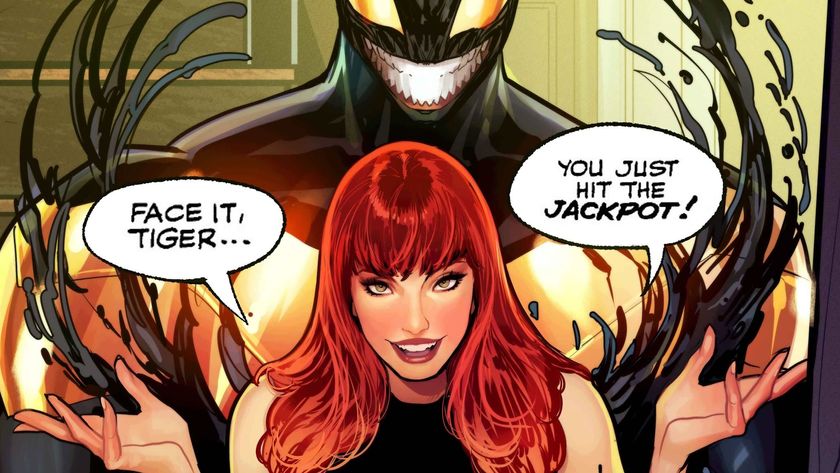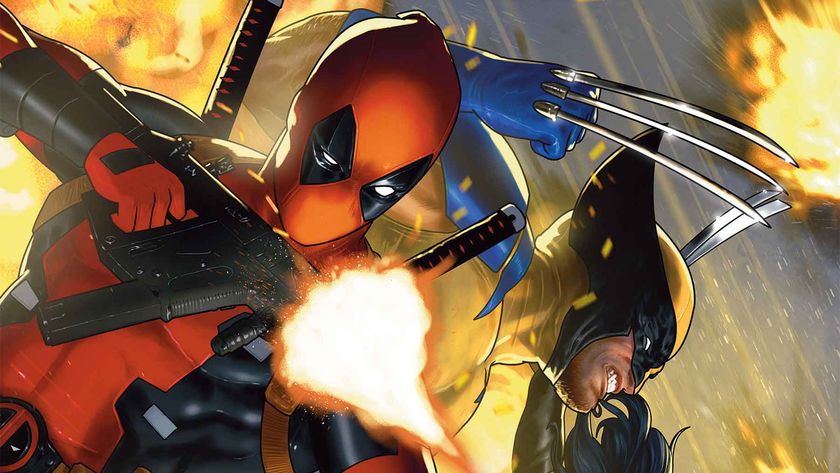Looking at the iconic The Suicide Squad comics revamp that inspired James Gunn's film
Revisiting the Suicide Squad comics that inspired James Gunn's The Suicide Squad
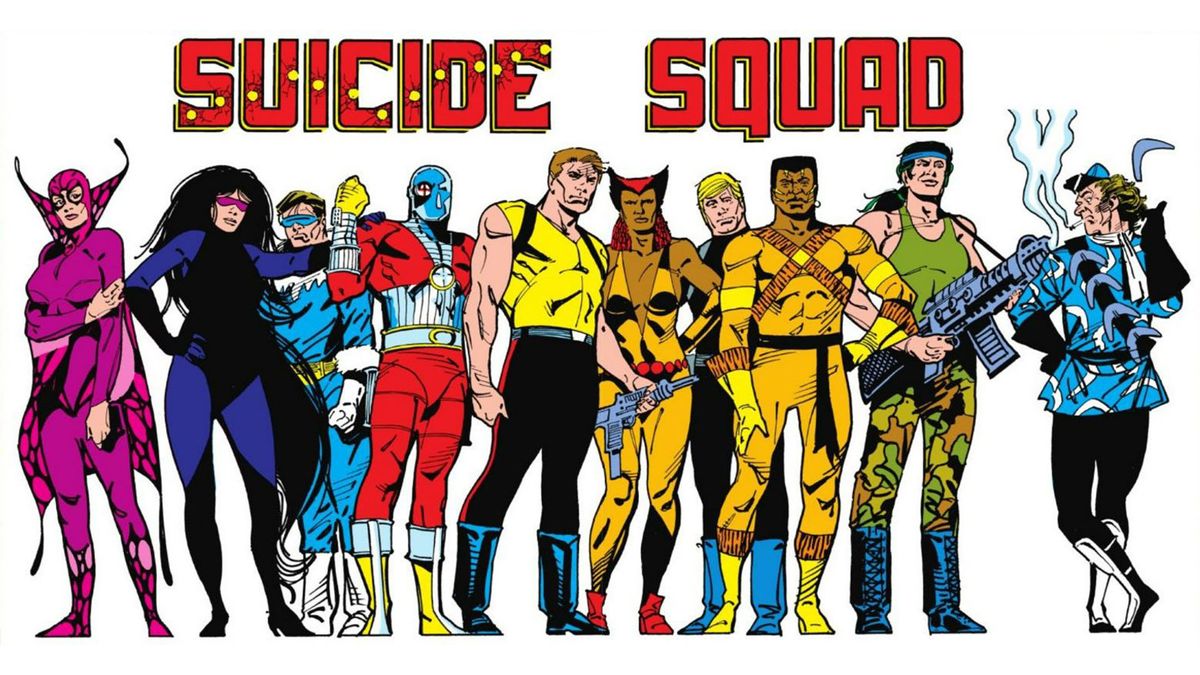
Writer/director James Gunn has said numerous times that The Suicide Squad film was modeled to be more in line with the classic Suicide Squad comics, and while the film does well on that note - let's not forget those actual comics.
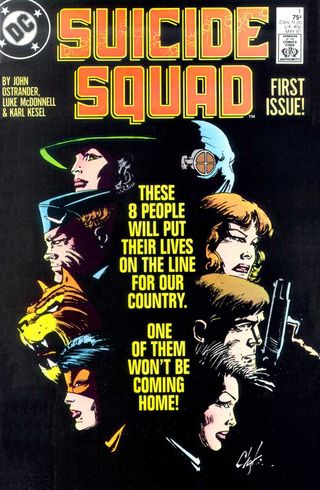
Launched in the wake of Crisis on Infinite Earths as a dramatic revamp of a forgotten '50s DC team, the Suicide Squad as we know it was born out of stories by writers John Ostrander and Kim Yale, along with artists such as Geof Isherwood, Todd Klein, and more. It's in the second issue of their Suicide Squad series that the tone of the franchise becomes clear, as well as the template which each subsequent run and adaptations have strived to match.
Task Force X has been sent into Qurac in order to neutralize a terrorist group called the Jihad before they commit an attack on American soil. Initially, it seems like the mission might proceed smoothly, but only for a minute as Plastique tries to change sides just as soon as they make it inside the compound. Later, Boomerang’s battle with a member of the Jihad ends with the latter toppling over a railing, falling to their death, capped off with a “Splat” SFX and in addition to this, he lets his fellow squad member Mindboggler die without making any effort to save her during their escape. When he regroups with the others at the extraction point, he makes up a story about how he tried to.
What these three beats ensure is that the stakes are not only introduced but made clear. Not only are these various criminals (and some well-intentioned heroes) in danger of being killed just as quickly if they’re not careful, but it is also evident that they’re not a fully in-tune team. Instead, it’s more an ensemble of volatile personalities, a quality that makes for a pressure cooker of a run that always finds new ways to explode.
The drastic reboot of Suicide Squad
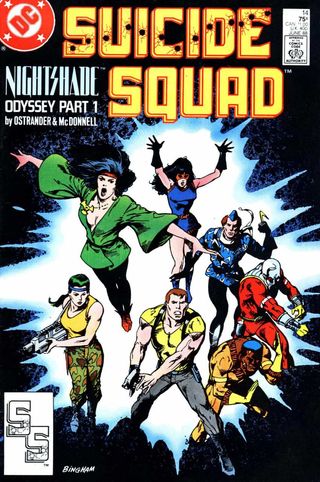
The Suicide Squad has its basis in the Silver Age, at least in terms of the name, however it was writer John Ostrander in the '80s who transformed it into the version we know today, with some moments being directly translated from page-to-screen like Slipknot attempting to escape a mission only for his bomb to explode. Together with partner and eventual co-writer Kim Yale plus a host of other collaborators – including primary penciller Geof Isherwood and letterer Todd Klein – this first volume ran for 66 issues as well as spun out a Deadshot limited series and sparked crossovers with a multitude of books that ranged from Firestorm to Justice League International.
In-universe, the Squad is formed as a necessity to undertake dangerous missions that could hurt the USA’s reputation in the eyes of the wider world if they were to go wrong. But who would be willing to do this dirty work? Well, Amanda Waller sees it fit to use prisoners, who are “broken or bent people”. Operating out of Belle Reve Prison, their reward for successful operations will be time off their sentence, so long as the perilous conditions don’t get them first.
The Suicide Squad integrates into the larger DCU
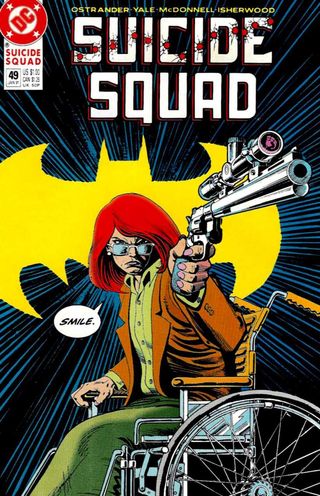
Rather than being content to exist in the confines of the shadows, the creative team takes great efforts to ensure that the Suicide Squad would be cemented as a major part of the DC Universe by the time they were done and not just a riff on the Dirty Dozen concept. To do this, they enlisted a number of existing characters, just not the big ones. Instead, they looked at ones that would be considered more C-list (or lower); characters like Captain Boomerang who were created around a gimmick and that were usually treated as fodder for heroes like the Flash to tangle with for an issue, but never be so much of a threat to not be defeated by the final page.
Comic deals, prizes and latest news
Get the best comic news, insights, opinions, analysis and more!
In addition to Captain Boomerang, Mindboggler, and Plastique, that first mission is undertaken by Rick Flag, Deadshot, Bronze Tiger, and Enchantress. Not all of them make it to the very end of the series for one reason or another and to counteract this, other characters of a similar popularity level like Vixen, Shade the Changing Man, Poison Ivy, Count Vertigo, and more join in. These changes to the roster are not just for the sake of being able to market a new team to prospective readers, mind you, they are the result of following through on the taxing nature of what it is to be part of a group that’s seen as expendable. It might not be the dangerous conditions of a mission that get one of them, but the mere threat of being disavowed and swept under the rug weighing on them. Or it might be the question of if they’re actually accomplishing any good when missions so frequently go awry and others [read: Boomerang] seem more dedicated to causing chaos.
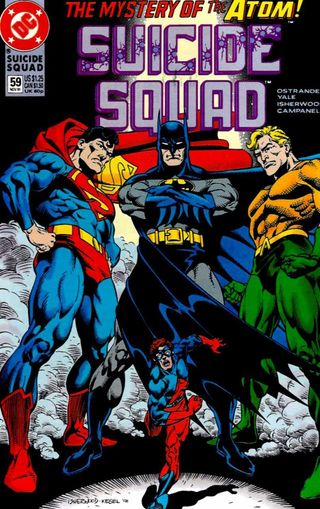
What Ostrander and the team did was take these characters as seriously as they would the A-listers and commit to exploring the physical, emotional, and psychological states of their ensemble. These issues manifest in a multitude of ways. Rick Flag is still haunted by the death of his father as well as a disastrous mission from when he was on the initial iteration of the Silver Age Squad which he barely walked away from. Enchantress can change between personas however the former identity becomes more powerful with each swap and runs the risk of assuming full control of the body. At one point, Deadshot loses his suit and has to contend with an identity crisis about who he really is. Count Vertigo hears voices of self-doubt that egg him into committing suicide. Even Amanda Waller has to contend with the trauma of losing her family to crime, though the series doesn’t just treat mentioning that buzzword as doing the necessary work to claim that it is about it. Throughout the run, the creative team employs Personnel Files issues, which take place in the downtime between larger missions, and puts the focus on the efforts of Belle Reve employees doing their best to help the members of the Squad.
The humor of the Suicide Squad
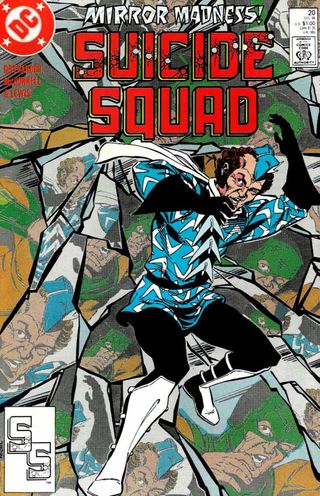
Now, all of this sounds like dense and heavy thematic material to dig into and deal with. Which it assuredly is, but the creative team’s deft touch means they know how and when to intersperse moments of levity to keep things balanced just as well as they know how to keep so many plates spinning and when to return to each one. The oddball sense of humor is best showcased midway through the series when there’s a recurrent mystery of who’s throwing pies at various inmates and at one point Waller itself. The act of being pied often comes when you (and the Squad) least expect it and even something as frivolous as this is a jolt of energy that keeps you on your toes.
Likewise, the missions themselves are never as straightforward as Waller hopes they are. Many of them are of a geopolitical nature and not just conveyed through made-up organizations like Checkmate and Task Force X. Ostrander and the creative team utilize the Cold War reality that they were living through as a source of inspiration, like with one such early undertaking of the Squad seeing them sent into Russia to extract a political prisoner… only they don’t want to be liberated as was assumed. Even President Ronald Reagan appears in the series as early as the second panel of Secret Origins #14, which serves as a prelude to the series proper by telling the story that leads to the creation of the Squad.
Anchoring the entire series across its many issues is the creative team’s genuine commitment to treating its composite aspects with the same level of importance. So just as they ensure that their contemporary political context informs the series, they also make full use of the sandbox available to them through situating this within the DC Universe. The third issue, which takes place in the wake of the Qurac mission we first discussed, sees the Female Furies attack Belle Reve, as per Darkseid’s command. The Squad is already taking stock of their losses and injuries from that mission and putting them up against a force from the cosmos helps to show where they stand in the grand scheme, which is to say how much these characters that are outmatched in their discordant efforts to defend themselves.
The humanity of the Suicide Squad
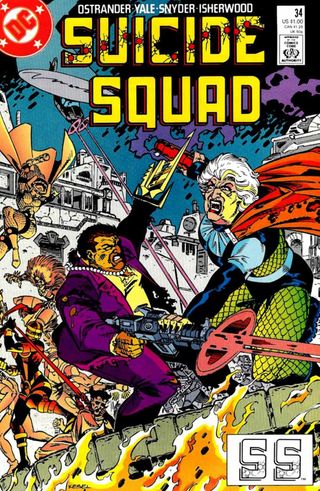
The way all of these threads and the series’ intentions come together can be seen 30 issues later when the Squad travels to Apokolips. Now, there’s an implicit understanding that the Suicide Squad has become situated in the DCU enough to be able to have a story there, even if they’re still the underdogs of the match-ups – it is quite a sight to see Waller square up to Granny Goodness and talk back to Darkseid. Of course, they also suffer some losses. One of these is Flo, one of Belle Reve’s computer operators, which serves to remind the human cost. The other however is Doctor Light, whose story manages to exemplify the efforts of a person desperate to try and do good, but also gets to indulge the series’ perverse humor by thinking he’s going to heaven for his efforts only to end up in hell.
However, there is no better example of the series’ and creative team’s dedication to the idea of rehabilitation than what they do with Barbara Gordon, who was Batgirl until Batman: The Killing Joke was folded in the main continuity, which saw her paralyzed and threatened to have her fade into obscurity. Ostrander and Yale bring her back into the fold in the form of Oracle, at first a mysterious person (though there are clues) communicating through the Belle Reve computers. She becomes more prominent over the course of the series, eventually coming to own this new identity and all that she can still accomplish in her efforts to make the world a better place. And as luck would have it, the identity stuck in the universe until the 'New 52' rebooted much of it. Rather than becoming forgotten, the creative team ensured a new way forward for her. Characters might raise concerns throughout the run about if the Squad is really accomplishing anything, and Boomerang’s unwillingness to reform (albeit leading to some prime moments of the series’ laughs) can threaten to suggest the Squad is a failed experiment but this arc shows that the concept of rehabilitation works so long as the work is put in.
For all of the troubles faced over the course of the series, the final mission goes pretty well and gives the Squad some time to relax before they head back to Belle Reve. Only they notice that Count Vertigo and Deadshot have snuck off. The last scene is of the two as Deadshot points a gun at Vertigo, who’s deciding if he really does want to die. It wouldn’t be by his own hand, but it would be suicide all the same. A tense beat passes at the two stand there, only for Vertigo to decide against it. In the afterword, Ostrander and Yale explain that they made this story decision because they wouldn’t be able to follow through on the repercussions of Vertigo said yes. It is a perfect summation to the run, exemplifying their commitment to the cause of exploring the effects of who these people are.
Take a deep dive into all of this with Newsarama's oral history of the Suicide Squad.
Matt Sibley is a comics critic with Best Shots at Newsarama, who has contributed to the site for many years. Since 2016 in fact.

